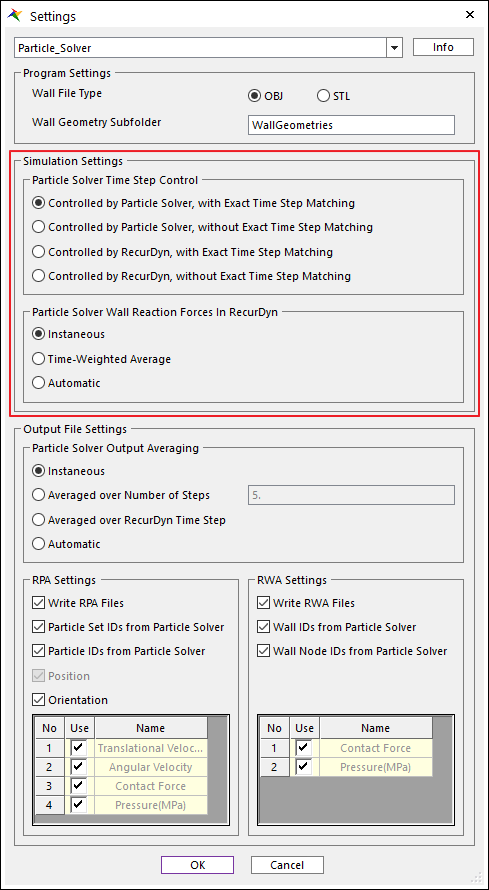

Figure 1 Settings dialog box
Particle Solver Time Step Control
This determines how the particle solver’s time steps are controlled. See the Theory: Co-Simulation Time Stepping Strategy section to understand the background of these options. Either the particle solver or RecurDyn can control the particle solver’s time steps. And the particle solver’s time steps can either be synchronized with RecurDyn’s time steps or not. If the particle solver’s time steps are synchronized with RecurDyn’s time steps, then the last time step of the particle solver will end at the same simulation time as RecurDyn’s time step. Exact time step matching means that the time steps are synchronized.
Particle Solver Wall Reaction Forces in RecurDyn
This determines the averaging of the particle solver’s particle-to-wall reaction forces that are sent to RecurDyn.
|
Option Name |
Description |
|
Instantaneous |
The reaction forces that are returned to RecurDyn are the forces at the end of RecurDyn time step. |
|
Time-Weight Averaged |
The reaction forces that are returned to RecurDyn are the time-weight averaged particle-to-wall reaction forces. This is expected to be more accurate in most situations. |
|
Automatic |
The particle-to-wall reaction force averaging is performed using a formulation that is controlled by the particle solver. Please see the particle solver’s documentation to determine the details of this formulation. |